|
F6F-3 Hellcat
Weekend Edition
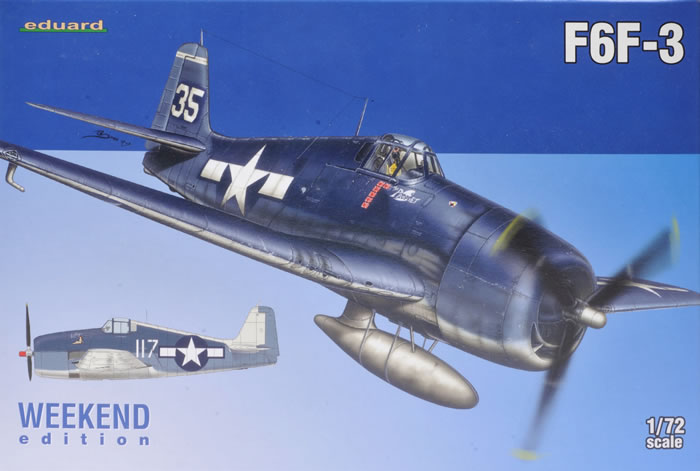
Eduard, 1/72 scale
S
u m m a r y |
| Catalogue Number: |
Eduard Kit No. 7441 - F6F-3 Hellcat Weekend Edition |
| Scale: |
1/72 |
| Contents and Media: |
68 grey coloured plastic parts; eight clear parts; decal sheet with two markings options plus decal sheet with stencil markings |
| Price: |
Available online from:
Eduard - USD$16.95 plus shipping
Squadron - USD$13.99 plus shipping
Hannants - £10.99 EU Price (£9.16 Export Price) plus shipping
and specialist hobby retailers worldwide and online |
| Review Type: |
FirstLook |
| Advantages: |
Superb detail; excellent surface texture (combination of recessed panel lines, lapped fuselage panels and fabric control surfaces); straightforward parts breakdown; ample options including centreline fuel tank, bombs and three styles of engine cowling; excellent clear parts with different sliding sections for open and closed options; perfect moulding; high quality decals. |
| Disadvantages: |
All plastic parts packed into one bag. |
| Recommendation: |
Pocket money price for an excellent kit. Highly Recommended |
Reviewed by
Brett Green

Eduard's 1/72 scale F6F-3 Hellcat Weekend Edition is available online from Squadron.com
The Grumman F6F Hellcat was designed as a stop-gap upgrade of the lightweight F4F Wildcat, almost as an insurance policy in the event that the F4U Corsair, then under development, did not live up to expectations.
Despite the clear family resemblance to the earlier Wildcat, the Hellcat was an all-new aircraft. The resulting naval fighter was stocky in profile, large, powerfully armed and armoured, and heavy. The Hellcat secured its place in history with a remarkable kill ratio of 19:1.

A number of 1/72 scale F6F-3 Hellcat kits have been available for some time now. Hasegawa's is an older kit with raised panel lines and a basic cockpit; while the Academy 1/72 scale Hellcat has thick trailing edges, an incorrectly shaped fin and sparse detail.
Eduard entered the Hellcat market with their 1/48 scale F6F-3 kit, first released in early 2008. This was an excellent kit - well detailed with lots of options and state-of-the-art surface detail.
Eduard released their 1/72 scale F6F-3 Hellcat in 2011. The downsized kit compares remarkably well to the 1/48 scale version. In fact, to look at the photographs here, you'd be hard pressed to tell that it was a small scale kit.
Eduard has re-released their small-scale F6F-3 in a new Weeked Edition boxing. Typical of Eduard's Weekend Edition, this time around we don't get photo-etched parts or masks. What we do get are the excellet plastic parts and two marking options at a bargain basement price.
The kit comprises comprises 68 parts in grey coloured plastic; eight clear parts, a small decal sheet covering two markings options and a second decal sheet with stencil markings.
Surface texture on this Hellcat is superb. In common with its 1/48 scale cousin, this Hellcat fuselage employs a unique and subtle lapped panel effect. This really works well.
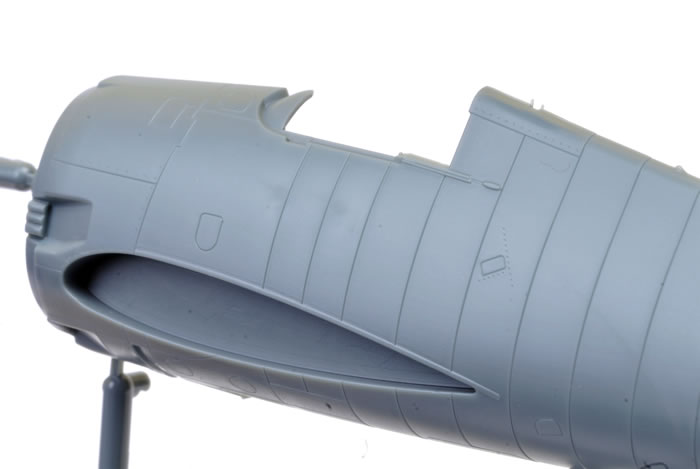
The balance of surface detail is a combination of crisp, finely recessed panel lines and selected rows of rivets. The subtle ribs on the fabric control surfaces are also very convincing.
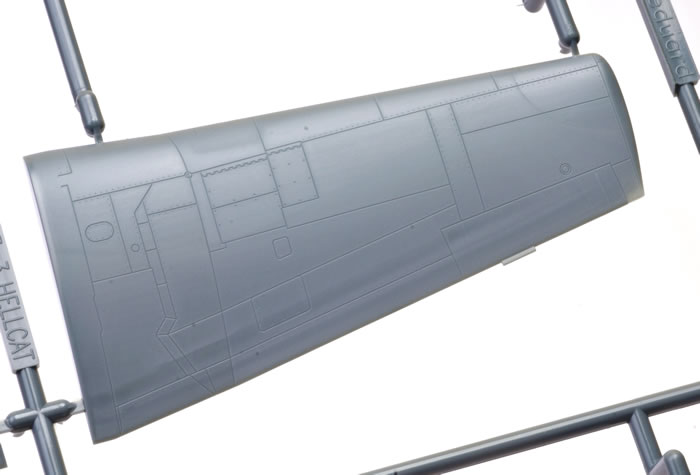
In the cockpit, there is a nicely moulded injection moulded instrument panel with decals for dials. Decals are also offered for harness straps and console switch detail.
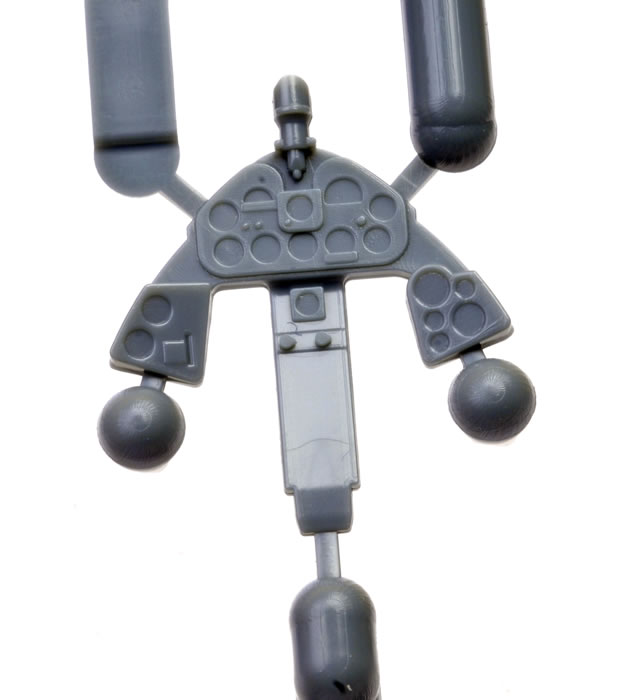
The engine looks good, being made up from five plastic parts. Pushrods are moulded in place.
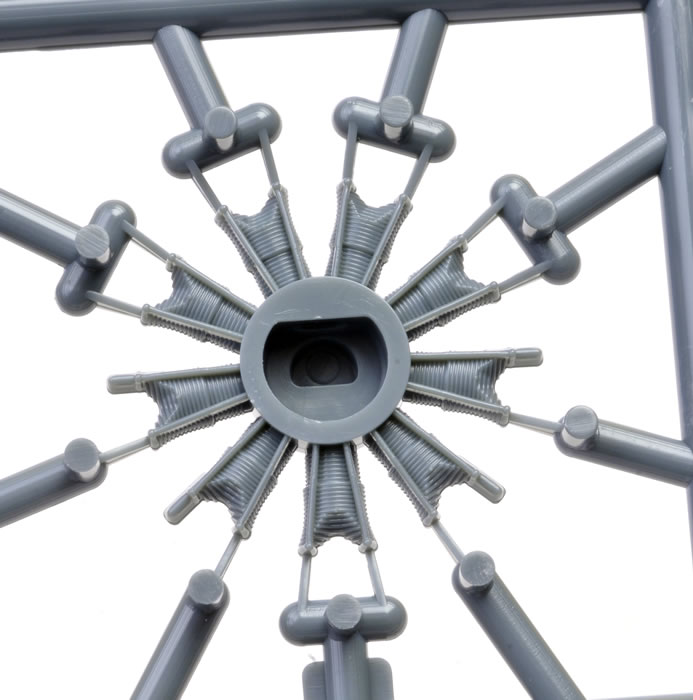
The undercarriage legs and wheel wells are suitably busy. The wheels are supplied with separate hubs and tyres. Two styles of tyres are included - diamond and radial treads. While the tyres in the initial release of the 1/48 scale Hellcat were a little undernourished, the width of these look good.
The delicate antenna post on the fin is moulded in place, so some care will be required when handling the model during construction and painting.
The canopy parts are crystal clear and thin. Separate parts are supplied to permit the sliding canopy to be displayed open or closed. The rear cockpit windows are moulded as separate clear panels (the window sections of the panels are covered by self-adhesive masks during painting), and parts are also provided for the later windowless F6F-5 variant, although they are not for use in this version.
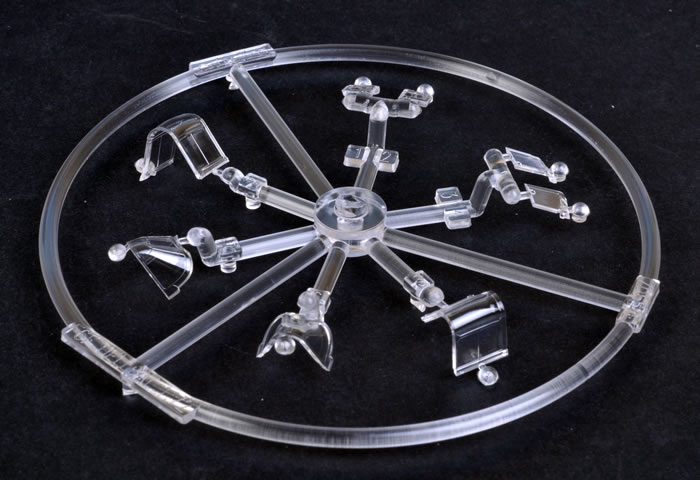
Control surfaces are all moulded in place and in neutral positions. The wings are specific to the F6F-3 variant.
The cowl is broken down into three pieces, and three different cowl styles are offered:
-
The earliest, with exhaust fairings and lower cowl flap on each side
-
Next, with the exhaust fairings but with the lower cowl flap deleted from each side
-
The later F6F-3 variant with no exhaust fairing.
Optional parts are included for two styles of bombs, centreline drop tank and rockets (although the rockets are not used in this boxing).
Just about the only thing I don't like is the side-opening box - flimsier than Eduard's usual top-opening box and harder to sift through the contents - and that all three olive-coloured sprues are packed into a single bag (a la Hasegawa), resulting in some minor scuffing on the fuselage parts.
Markings
Two marking options are included on the small decal sheet:
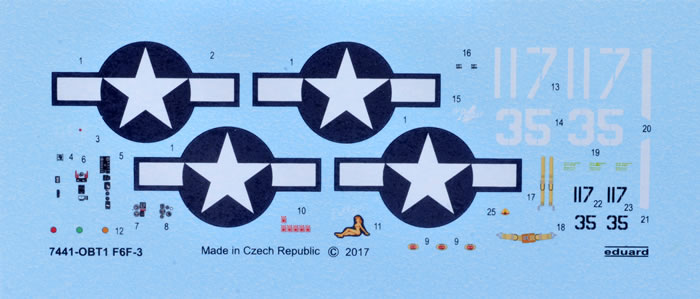
The decals are opaque, with good colours and perfect register. My experience with Eduard decals has been very positive. They are thin and settle down well into panel lines and contours, responding well to Micro Set and Micro Sol.
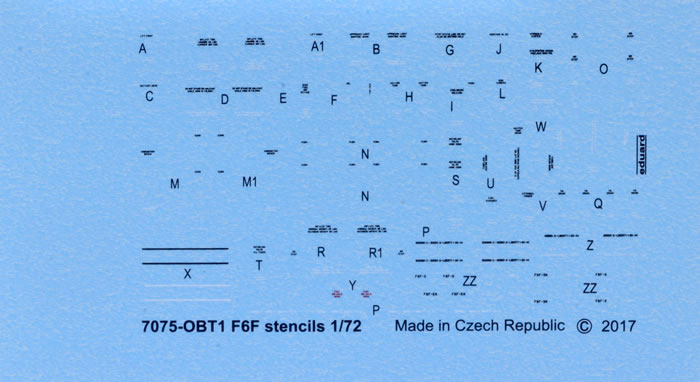
A small second decal sheet is supplied with stencil markings.
That Hellcat Grin...
The question of the Hellcat's chin intake shape has long been the subject of lively discussion.
The shape of this "grin" is instantly recognisable. It may appear to be a simple crescent, but its exact contours are quite subtle and have proven elusive to some model manufacturers. Below is a wartime photo showing the intake.
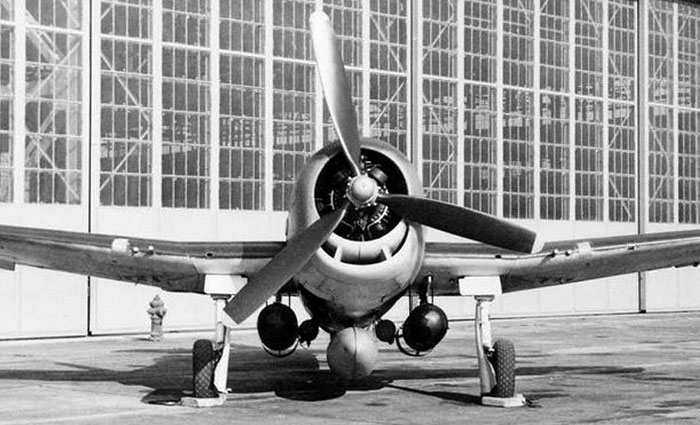
Note that there are several factors at play in this photograph (and most others) that make it difficult to determine the exact shape of this intake. First, the angle of the aircraft, tilted slightly back, means that we are looking up into the upper intake lip, and the crescent is slightly distorted. Secondly, the light is shining brightly into the front few inches of upper intake lip, possibly exaggerating the height.
Nevertheless, in my opinion, this photo is a pretty good representation of the intake.
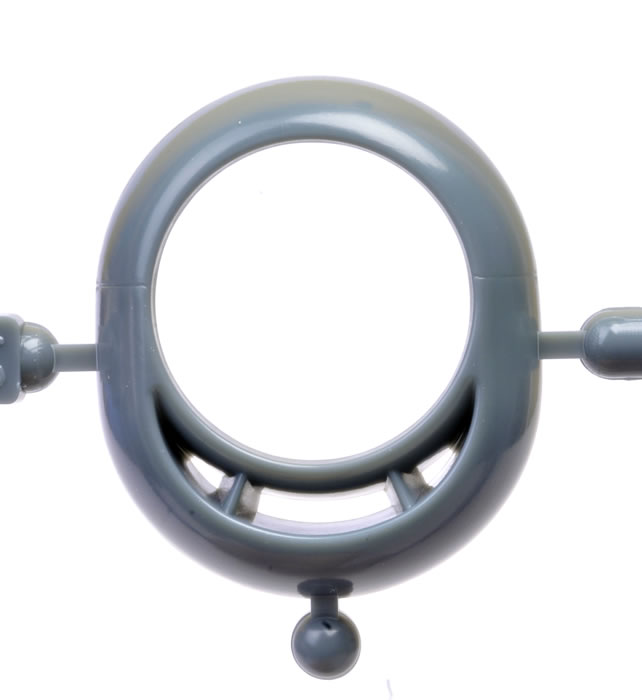
Eduard has done a very good job at capturing the size and the subtle shape of this distinctive grin in 1/72 scale.
Eduard's ProfiPACK 1/72 F6F-3 with its photo-etched parts and masks was a great kit, but for those who don't like photo-etch or who are modelling on a budget, this Weekend Edition version is a very viable alternative.
This is an excellent kit for a pocket money price.
Highly Recommended.
Thanks to Eduard for the sample
Review Text and Images Copyright © 2017 by Brett Green
Page Created 4 July, 2017
Last updated
4 July, 2017
Back to HyperScale Main Page
Back to Reviews Page

|
